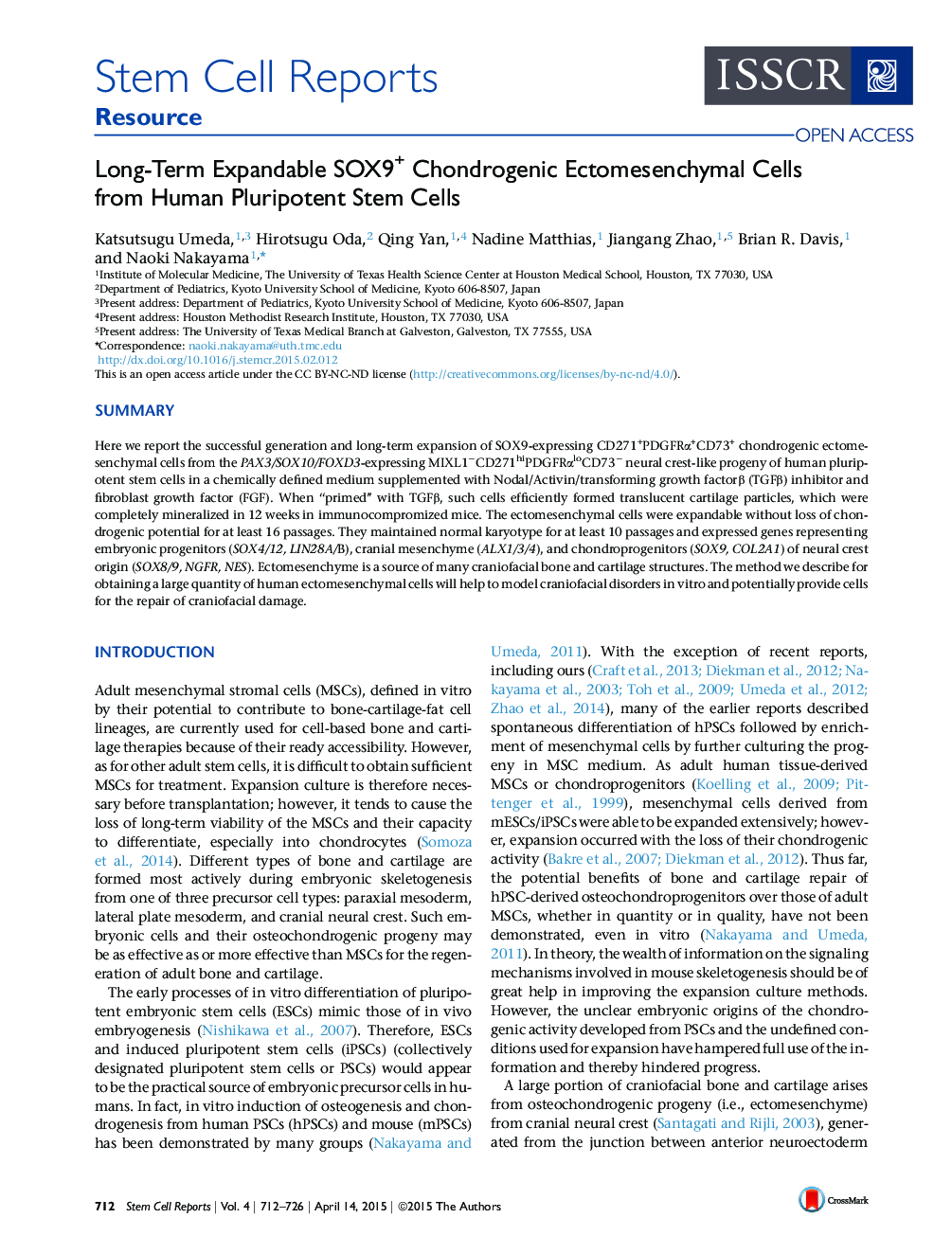| Article ID | Journal | Published Year | Pages | File Type |
|---|---|---|---|---|
| 2093619 | Stem Cell Reports | 2015 | 15 Pages |
•Generation of SOX9+ chondrogenic ectomesenchymal cells from hPSCs•Long-term expandability of the cells without loss of in vitro chondrogenicity•Need for TGFβ priming for cartilage particle formation•In vivo ossification capacity of cartilage developed in vitro
SummaryHere we report the successful generation and long-term expansion of SOX9-expressing CD271+PDGFRα+CD73+ chondrogenic ectomesenchymal cells from the PAX3/SOX10/FOXD3-expressing MIXL1−CD271hiPDGFRαloCD73− neural crest-like progeny of human pluripotent stem cells in a chemically defined medium supplemented with Nodal/Activin/transforming growth factorβ (TGFβ) inhibitor and fibroblast growth factor (FGF). When “primed” with TGFβ, such cells efficiently formed translucent cartilage particles, which were completely mineralized in 12 weeks in immunocompromized mice. The ectomesenchymal cells were expandable without loss of chondrogenic potential for at least 16 passages. They maintained normal karyotype for at least 10 passages and expressed genes representing embryonic progenitors (SOX4/12, LIN28A/B), cranial mesenchyme (ALX1/3/4), and chondroprogenitors (SOX9, COL2A1) of neural crest origin (SOX8/9, NGFR, NES). Ectomesenchyme is a source of many craniofacial bone and cartilage structures. The method we describe for obtaining a large quantity of human ectomesenchymal cells will help to model craniofacial disorders in vitro and potentially provide cells for the repair of craniofacial damage.
Graphical AbstractFigure optionsDownload full-size imageDownload as PowerPoint slide
